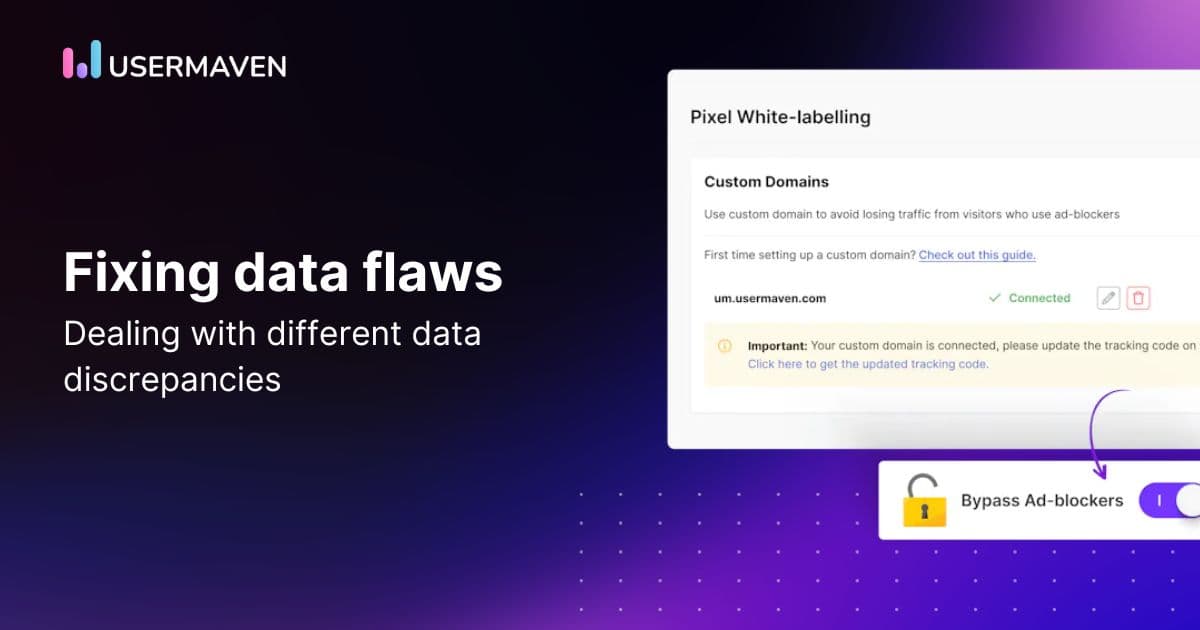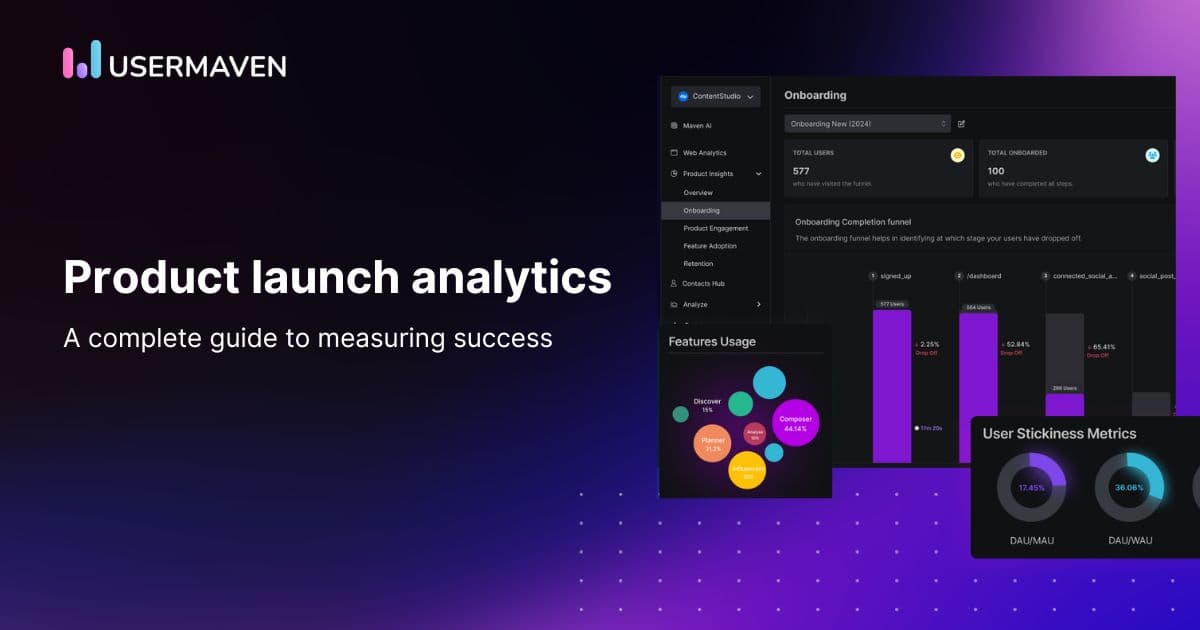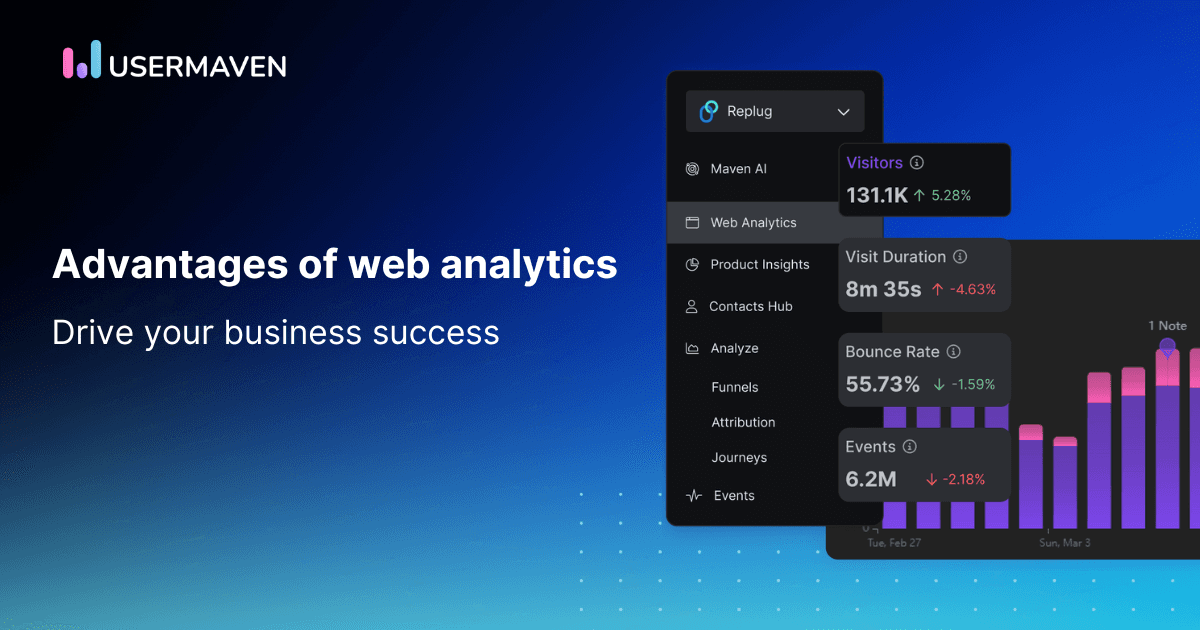Table of contents
- What is data discrepancy?
- How data discrepancies affect business processes?
- What causes a discrepancy in data?
- How to identify discrepancies in data?
- Navigating Ahrefs’ traffic puzzle
- Solving data differences on different platforms
- Methods for resolving discrepancies in data
- Best practices for managing and minimizing discrepancies in data
- Conclusion
- FAQs
Dealing with different types of data discrepancy
Feb 25, 2024
6 mins read

In the world of making decisions based on data, dealing with data discrepancies is a big deal.
These discrepancies happen when different data sets don’t match up, making it tough to make accurate decisions.
The challenge involves figuring out these differences, finding out why they happen, and highlighting how using product analytics tools can help prevent them.
Now, here’s the key question:
Should you be bothered by data discrepancies?
Absolutely, and our article is here to explain why.
Let’s dive into why caring about data discrepancies is important and, more importantly, discover effective ways to tackle them.
What is data discrepancy?

Data discrepancy arises when two or more comparable data sets don’t match. For instance, discrepancies may occur when different analytics platforms or dashboards display varying values for the same metric. This misalignment can stem from setting differences, such as date ranges or attribution windows.
Imagine you’re checking your website’s visitors on Google Analytics and Moz. Google says you had 1200 organic visits last month, but Moz claims it’s 1150. That’s a data discrepancy – just a fancy term for when different tools don’t agree on the numbers.
It happens because they might count things a bit differently, like what they consider “organic” or how they calculate the stats. It’s like two friends arguing over who caught the bigger fish – they might have different ways of measuring!
Well, this can affect your business, and to what extent? Let’s see;
How data discrepancies affect business processes?

The 2023 Data Quality Survey shows a big problem: data downtime has gone up by 166%. It means data teams are having a hard time. Even though they don’t say ‘data discrepancy,’ it’s clear there are issues with how data matches up. This survey says we need to fix these problems and make data better.
While minor discrepancies are inevitable, significant misalignments can have detrimental effects;
- Poor decision-making: Inaccurate or inconsistent data can lead to misinformed decisions and financial losses.
- Operational delays: Inconsistent data can disrupt workflows, causing inefficiencies and reduced productivity.
- Increased costs: Rectifying errors resulting from data discrepancies incurs direct financial costs. Additionally, indirect costs, such as employee dissatisfaction, can arise.
- Regulatory Compliance Issues: Data discrepancies may hinder compliance with data privacy regulations, potentially leading to legal problems and fines.
What causes a discrepancy in data?
Discrepancies in data can arise during data validation for a variety of reasons. Sometimes, data sets may contain errors that were introduced during the data collection process. Other times, discrepancies can occur due to differences in the way that different data sources define and measure key concepts.
In many cases, discrepancies in data are not a cause for concern. However, if discrepancies are large or persistent, they can indicate problems with the data that need to be investigated.
There are a number of possible causes of discrepancies in data for your user base.
1. Data entry errors
One of the most common causes of discrepancies in data is data entry errors. When data is entered manually, it is easy for errors to be made. This can lead to incorrect values being recorded or data being entered in the wrong fields.
2. Variations in data definitions
Another common cause of issues is variations in the way that different data sources are defined and how they measure key concepts. For example, two data sources may use different definitions of “employment” or “poverty”. This can lead to apparent discrepancies when the data is compared.
3. Sampling errors
Discrepancies can also occur due to sampling errors. This is particularly common when data is collected from surveys. If a sample is not representative of the population as a whole, it can lead to discrepancies in the data.
4. Changes over time
Changes in the underlying data can also lead to discrepancies. For example, if the definition of a concept changes over time, data from different periods may not be directly comparable. Also, time means more sessions in programs you use at your organization.
A single large change or event also makes a difference. For example, changing a platform that records a large amount of information. These changes compound and make reports, date information, and users all hard to track.
5. Data processing errors
Errors can also occur during the data processing stage. This can happen if data is incorrectly coded or formatted. It can also occur if data is mistakenly deleted or duplicated. It’s also possible in third-party analytics programs, like Google Analytics.
How to identify discrepancies in data?
Discrepancies in data can be tricky to spot. Sometimes, they can be hidden in plain sight within a seemingly innocuous dataset. Other times, they can be more subtle, appearing only when you compare two similar datasets side-by-side.
No matter how big or small, discrepancies often have a major impact on your data analysis and conclusions. That’s why it’s important to be able to identify them quickly and efficiently.
Here are a few tips for spotting discrepancies in data.
1. Compare multiple datasets
This is often the easiest way to spot discrepancies during data analysis. If you’re looking at two (or more) datasets that should be similar, any differences will stand out.
2. Check for outliers
Outliers can be a sign of discrepancies. If a data point is far from the rest of the data, it’s worth taking a closer look to see if it’s an accurate representation.
3. Look for patterns
Sometimes, discrepancies can be found by looking for patterns during data analysis. If something doesn’t seem to fit when tracking the rest of the information, it could indicate data discrepancy.
4. Use visualizations
Visualizations can be a helpful tool for spotting discrepancies. Graphs and charts can make it easier to identify outliers and patterns.
5. Check the source
If you’re unsure about the accuracy of a dataset, it’s always a
good idea to check the source. Make sure the data is from a reliable source before using it in your data analysis.
Discrepancies in data can be tricky to spot, but they’re important to identify. By following these tips, you can quickly and efficiently find discrepancies in your data.
Navigating Ahrefs’ traffic puzzle
A chat with Ahrefs revealed a surprising gap in the number of visitors reported for Malta-Media.com. While Ahrefs counted only 16 visitors in six months, Google Analytics showed a much larger number. Michael Schmitt from Malta Media raised questions about how Ahrefs counts traffic, suggesting they should keep it simple, like Google Analytics.
Now, the conversation is hype on social media. Why? Because it’s not just about numbers; it’s about trust and having the right info for smart digital decisions.

Solving data differences on different platforms
Imagine you’re running a business and want to make smart decisions using digital information. That’s where understanding and matching up data across different platforms come in handy.
Let’s take a look at a few popular platforms and how we can make sense of the numbers they give us:
Meta/Facebook
On Facebook, the numbers can be a bit tricky because they count things differently. But no worries! By figuring out how Facebook does its counting magic, we can make sure our business gets a clear picture of how people are engaging with us.
Apple search ads
When it comes to Apple search ads, things get a little confusing with clicks and time zones. But with a bit of awareness about these quirks, we can make the numbers from different sources (like Adjust and Apple) match up better, giving us a true sense of how our ads are doing.
Google Ads
Google Ads and Adjust speak slightly different counting languages. But no biggie! If we understand these differences and set things up carefully, we can track our online campaigns more accurately. This means a clearer picture of how well our ads are working.
Methods for resolving discrepancies in data
Discrepancies in data can be frustrating, but there are ways to resolve them.
Here are some methods for resolving discrepancies in data.
1. Check for errors
Sometimes, discrepancies can be caused by errors in data entry or calculation. If you think this might be the case, check your data carefully for any mistakes.
2. Compare different sources
If you have data from multiple sources, search and compare them to see if there are any discrepancies. This can help you identify where data discrepancy is coming from.
3. Use estimation
If you can’t find the exact data you’re looking for, you can try using estimation. This can help you get close to data validation even if you’re not able to resolve data discrepancy completely.
4. Ask for help
If you’re still having trouble resolving a discrepancy, you can ask for help from someone with more experience. This can be a colleague, friend, or professional.
Discrepancies in data can be frustrating, but by using these methods, you can resolve them and get the accurate information you need.
5. Use tools with built-in integrations
Seamless data transfers between analytics tools reduce the risk of discrepancies.
6. Create a data tracking plan
Define what data to track, standardize collection methods, and implement quality controls.
7. Develop a data validation process
Real-time monitoring, anomaly detection, and governance programs ensure data integrity.
8. Invest in data profiling tools
Automated tools analyze data structure and content, identifying and preventing inconsistencies.
Best practices for managing and minimizing discrepancies in data
A data discrepancy can often be frustrating for businesses and organizations. They can cause a lack of confidence in data-driven decision-making and can even lead to legal and financial problems.
However, discrepancies in data don’t have to be a death sentence for your business. There are a number of best practices that you can follow to manage and minimize discrepancies in your data.
1. Define what data discrepancy is
This may seem like a no-brainer, but it’s important to have a clear and concise definition of what a discrepancy is in your data. This will help you identify them when they occur and will also help you determine the best course of action for dealing with them.
2. Create a process for dealing with them
Once you know what data discrepancy is, you need to put a process in place to deal with it. This process should be designed to minimize the impact of the discrepancy on your business.
3. Train your employees on the process
It’s not enough to just have a process in place. You also need to make sure that your employees are trained on the process and understand how to follow it. This will help to ensure that the process is followed correctly and those discrepancies are dealt with in a timely manner.
4. Use data quality tools for data validation
There are a number of data quality tools available that can help you identify, track, and fix discrepancies in your data. These tools can be a valuable asset in your fight against data discrepancies.
5. Monitor your data regularly
Data discrepancies can often be the result of changes in your data over time. As such, it’s important to monitor your data and conduct data validation on a regular basis to identify discrepancies as soon as they occur.
6. Be prepared to take action
Once you’ve identified the data discrepancy, you need to be prepared to take action. This may involve correcting the data, contacting the source of the discrepancy, or taking other corrective action.
Discrepancies in data can be a major headache for businesses. However, by following these best practices, you can manage and minimize the impact of discrepancies on your business.

Conclusion
To sum it up, spotting and fixing data issues is key for SaaS success. It helps make better decisions, run things smoother,and avoid losing money. Try the tips in this guide to handle data issues like a pro. And if you’re curious about how Usermaven can help, book a demo today! Easy as that!
FAQs
1. How do you resolve data discrepancies?
There are a few ways to resolve discrepancies in data.
- Investigate the source of the discrepancy and determine which data is more accurate.
- Use estimation and interpolation to fill in missing data points.
- Remove outliers from the data set.
2. How do you determine data discrepancy?
There is no definitive answer to this question as it can vary depending on the context and what type of data is being analyzed. However, some methods for determining discrepancies in data include comparing different data sets to look for inconsistencies, using statistical analysis to identify outliers, and conducting audits or reviews.
3. What are the types of data discrepancy?
There are four types of discrepancies in data:
- Random error
- Systematic error
- Human error
- Instrument error
Try for free
Simple & privacy-friendly analytics tool
Know what's happening at every touchpoint of your users’ journey with AI-powered analytics.


